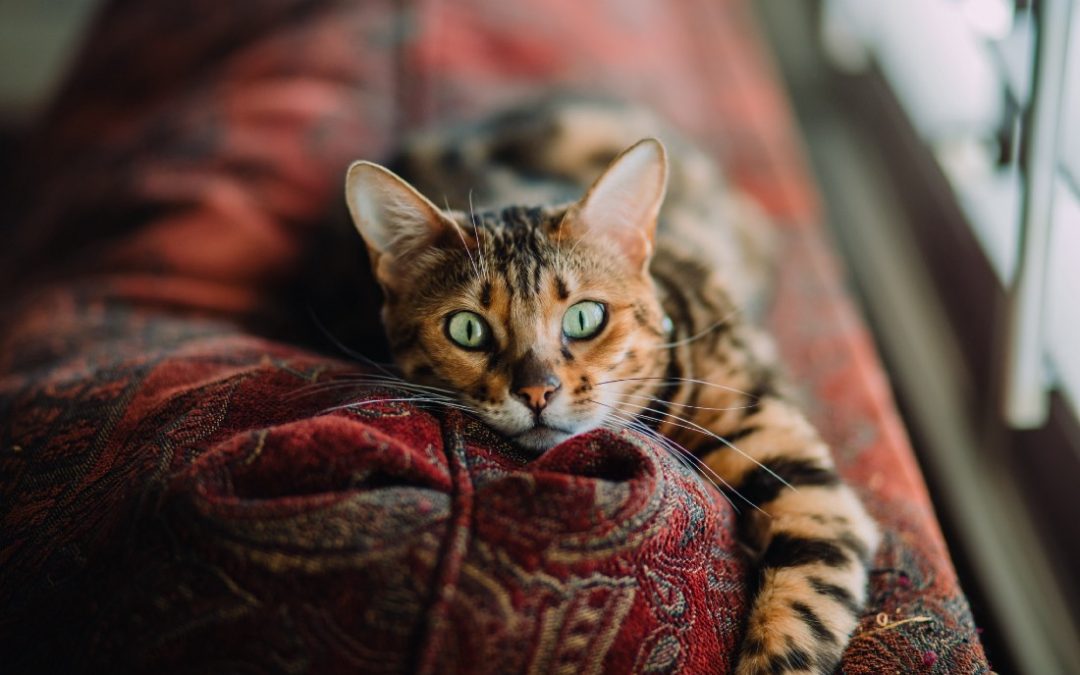How do you brush a cat? No, this isn’t one of those jokes like “how do you bathe a cat” that has been going around for years. If it was, I would just write, “very carefully” and be done with it. I think there is an art to brushing a cat. Just ask our cats. We have two cats from the same litter, both boys, who are about 7 years old and over the years they have decided that I am the Cat Brusher.
Each cat has chosen one of us as his special person, they clearly love us both, and brushing is allowed from both of us. However, the preference is for me to do the honors and therefore they have bestowed upon me the title of Official Cat Brusher. This is a title that is not always convenient, such as when I just finished brushing one of them, have moved on to brushing my teeth (not with the same brush), and the other shows up demanding his turn.
My wife has studied my technique so she can sub in during such occasions without upsetting the boys. (No one wants to upset a cat just before bedtime. They can ruin your sleep more effectively than the neighbor’s new outdoor Bluetooth speaker.) I’ve also spent some time watching myself to see if there is a method she could duplicate. One of the things we discovered is that I’m not especially consistent with my methods.
One time while watching myself pet one of our boys I wondered if I could come up with 10 ways to pet a cat. Turns out, I could. I also may have figured out a few of my subconscious tricks along the way.
- Carefully — No joke. Be aware of how and where you are using the brush and if the cat is enjoying it. Brush the hair back, towards the tail, not forward, towards the head, or in the direction it grows, such as down the legs.
- Use a pet brush. There are many different types of brushes made for cats. If your cat doesn’t seem to enjoy one, try another. Also, if you are not enjoying the feel or sound of one brush, try another. Your cat is likely to pick up on your discomfort, plus, if you don’t like it, you are less likely to use it.
- Use a human brush. Sure, why not? Use caution as you test it out. Some may not be as effective as others for getting through dense, long-haired cat fur and some bristles may be too stiff for more than very light pressure but if your cat enjoys it, go for it!
- Use a comb. There are special combs made for cat grooming, combs for detecting fleas, and even human combs. Combs can sometimes be better for things like detangling mats, or grooming long-haired cats, or might just be preferable for your cat.
- Use a grooming glove. A grooming glove looks like a regular glove but has rubber or plastic spikes on one side for brushing and capturing fur. These are fun because all you have to do is pet your cat in order to remove the loose fur.
- Use a fork. OK, this was a brainstorming session so not all ideas were stellar. I think it could be done if you are careful, but I don’t recommend it.
- Use a back scratcher. See #6.
- Use short strokes and long strokes. Different stroke lengths work better in different areas, plus some cats prefer one over the other. It is tempting to use long strokes along the cat’s sides but your cat may like short strokes better.
- Use varying speeds. Some cats may prefer fast brush strokes and others like a slower pace. See what your cat enjoys most. I would recommend slow strokes to start.
- Use varying pressures. Our cats tend to like quite a bit of pressure as compared to a very light touch. Start with gentle strokes and see what your cat likes. You want to use enough pressure for effective hair removal but not so much that your cat experiences discomfort.
I have saved the best for last. I think this is the key to really making everything else come together: Brush your cat mindfully.
It’s easy to brush your cat while having a conversation with someone else, watching TV, or browsing social media. I suggest not doing those things. While brushing your cat, be with your cat. Focus your attention on him. Pay attention to how he reacts to the way you are brushing him and adjust accordingly. Attempt to connect with your cat in whatever ways work for the two of you. You may pick up on his body language, his sounds, (purring is a great sign) or even his thoughts.
If you’ve never practiced or studied animal communication, you may think this sounds weird or impossible. It’s not, but that’s a different topic. For now, if you are brushing your cat and you get a picture or a message about what you are doing, just go with it even if you think it came from your own mind. If you sense that your cat likes what you are doing, or would like you to brush under his chin, or go slower, just do it and see what happens.
Trust me. I’m the Official Cat Brusher.
This article was first published on Medium.com. Title image by Caleb Woods. Follow me on Medium.

